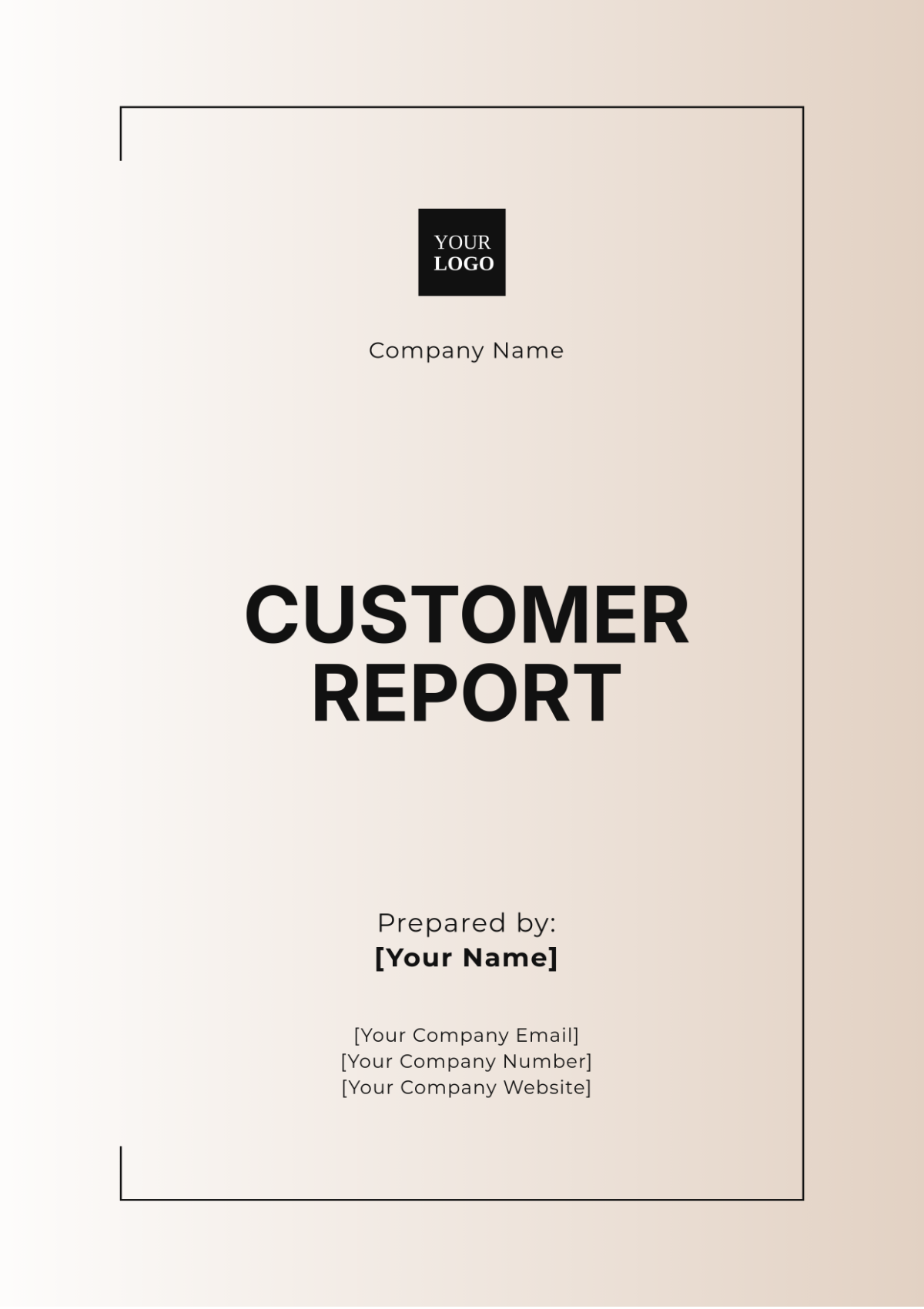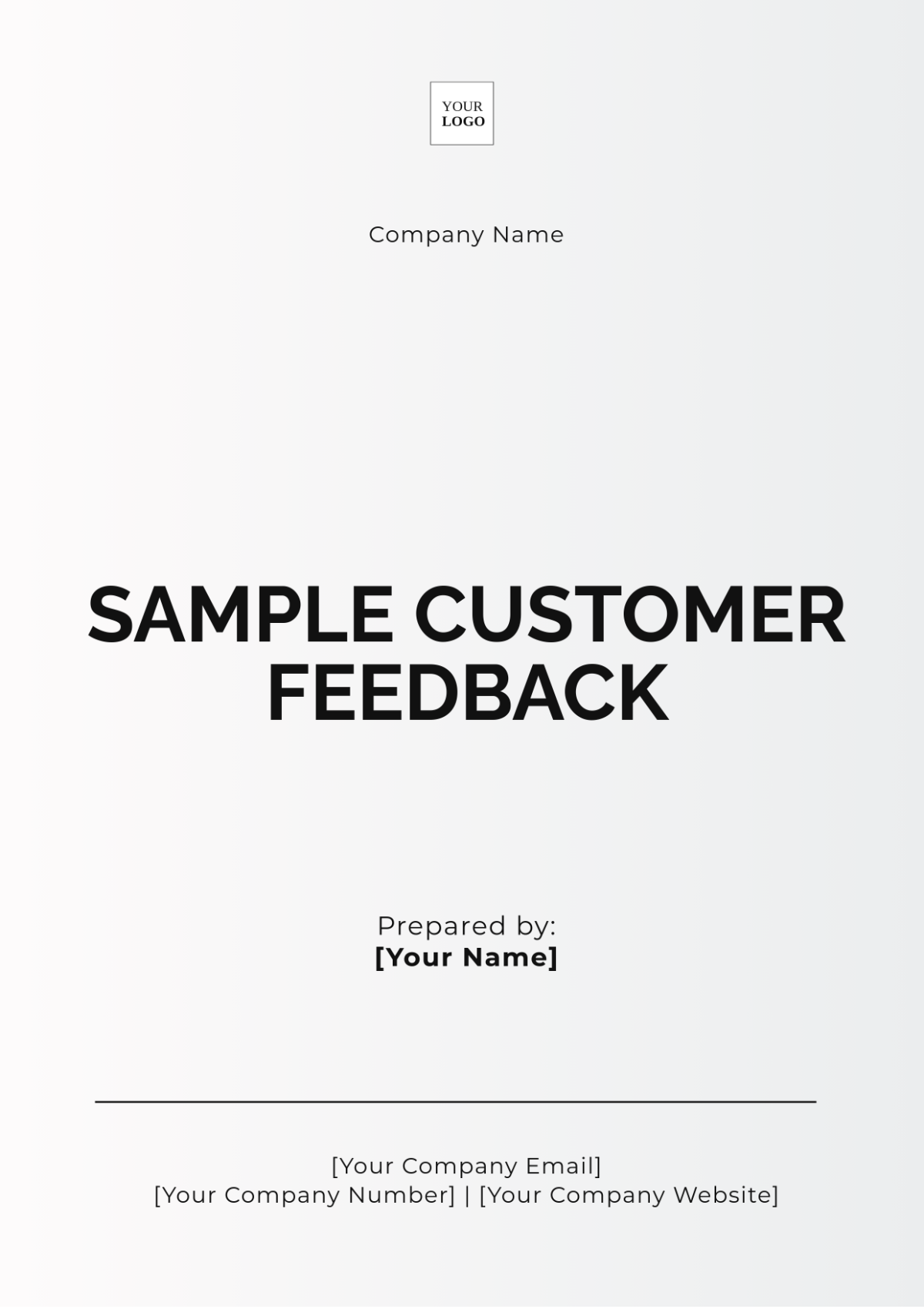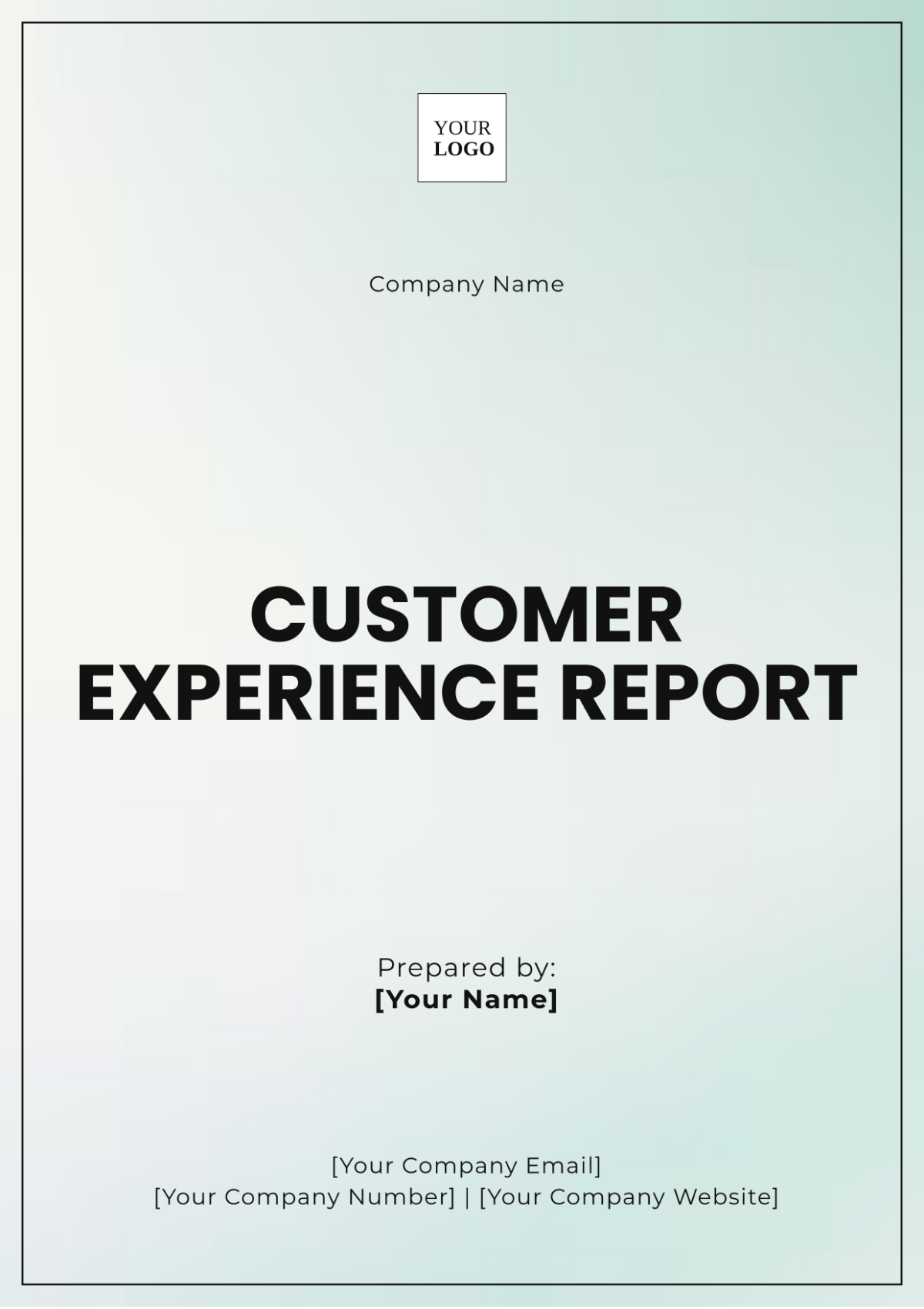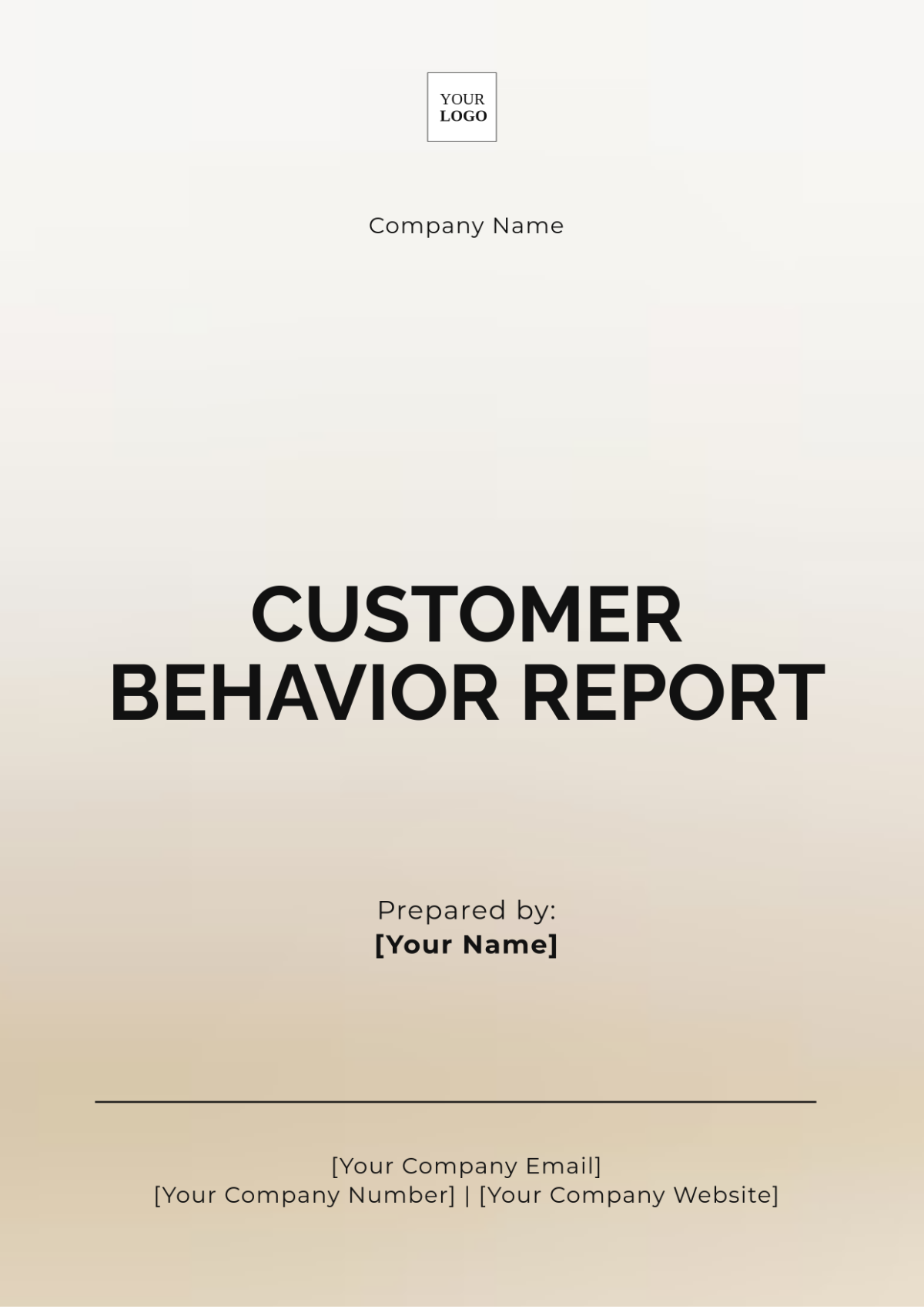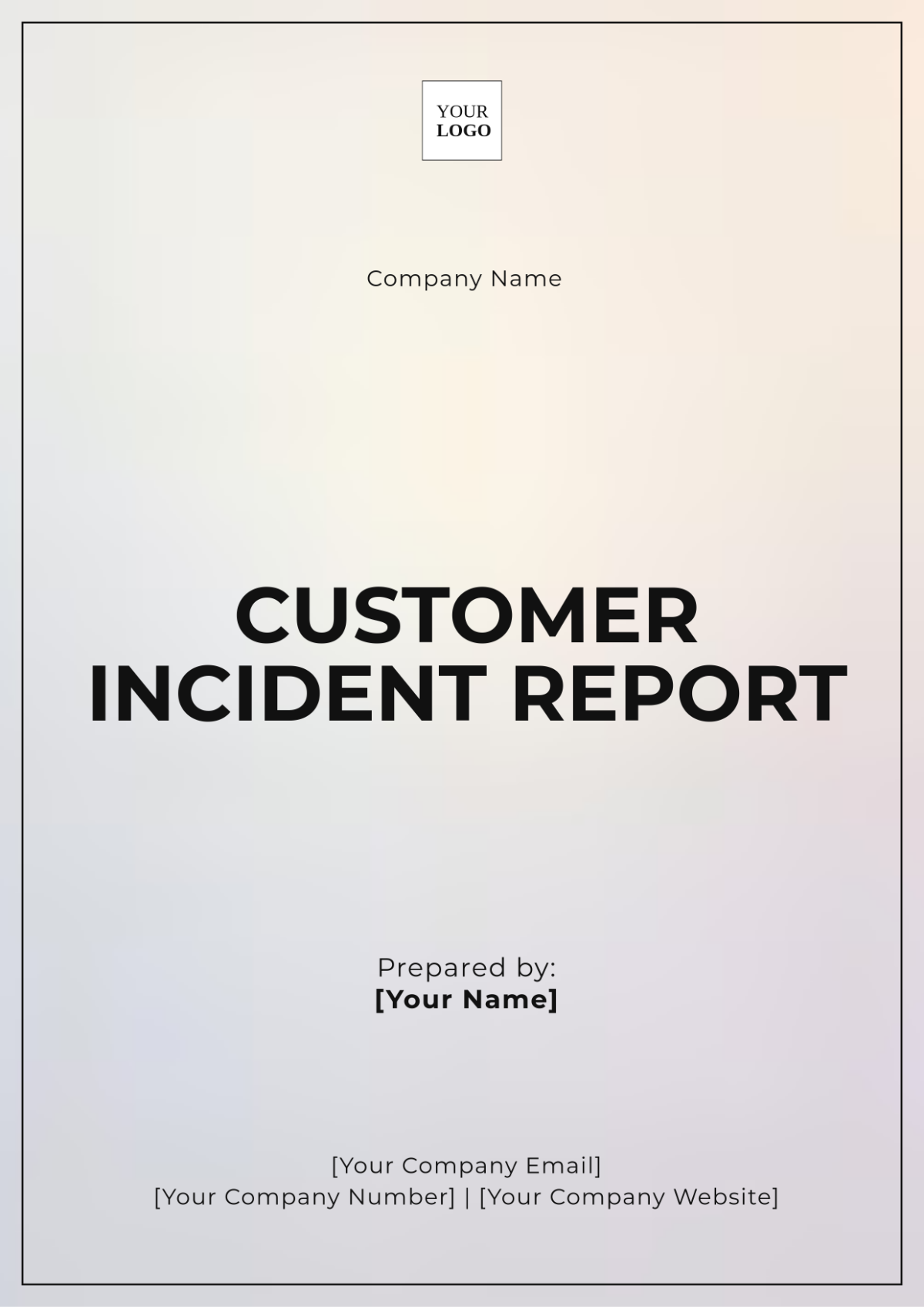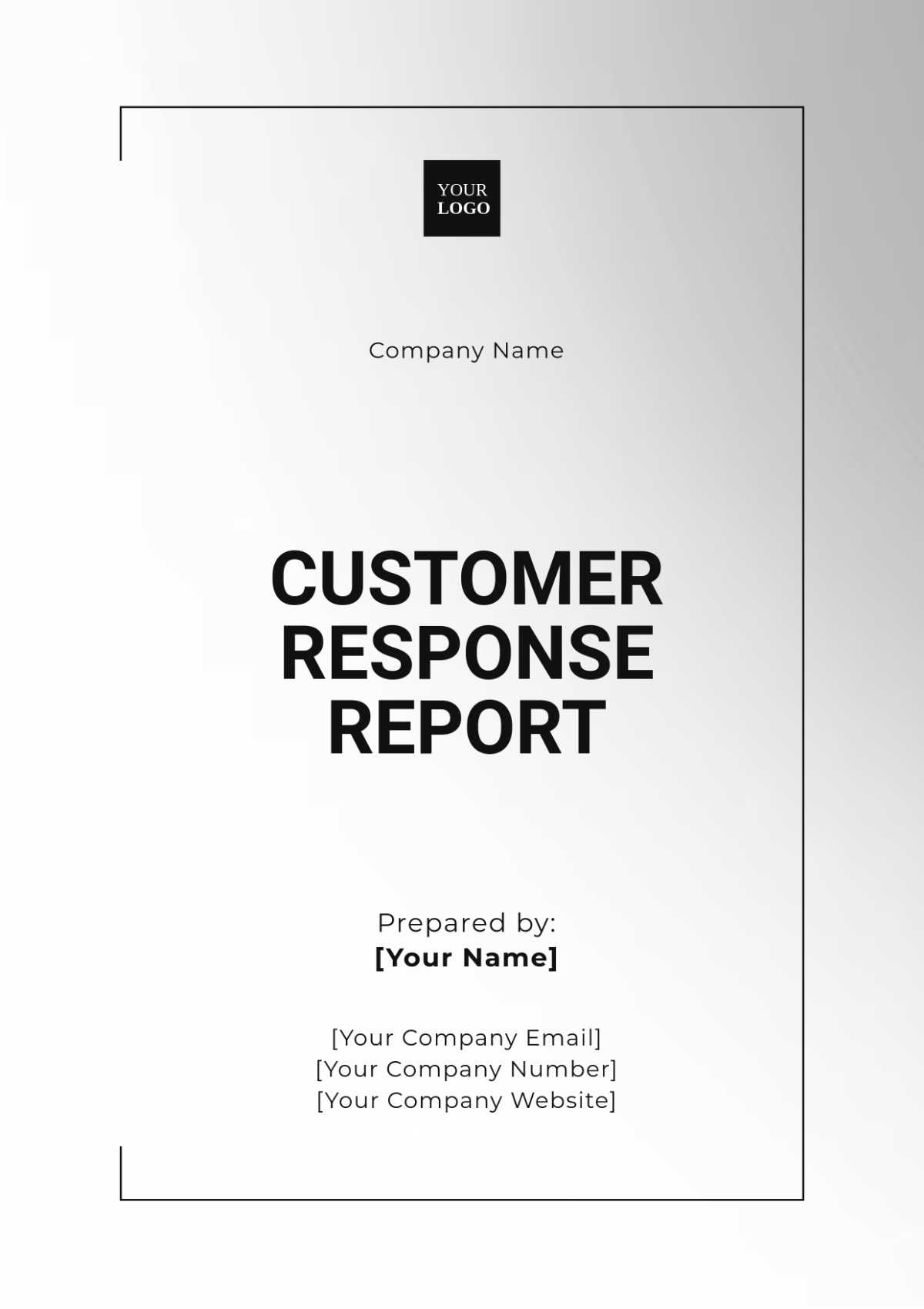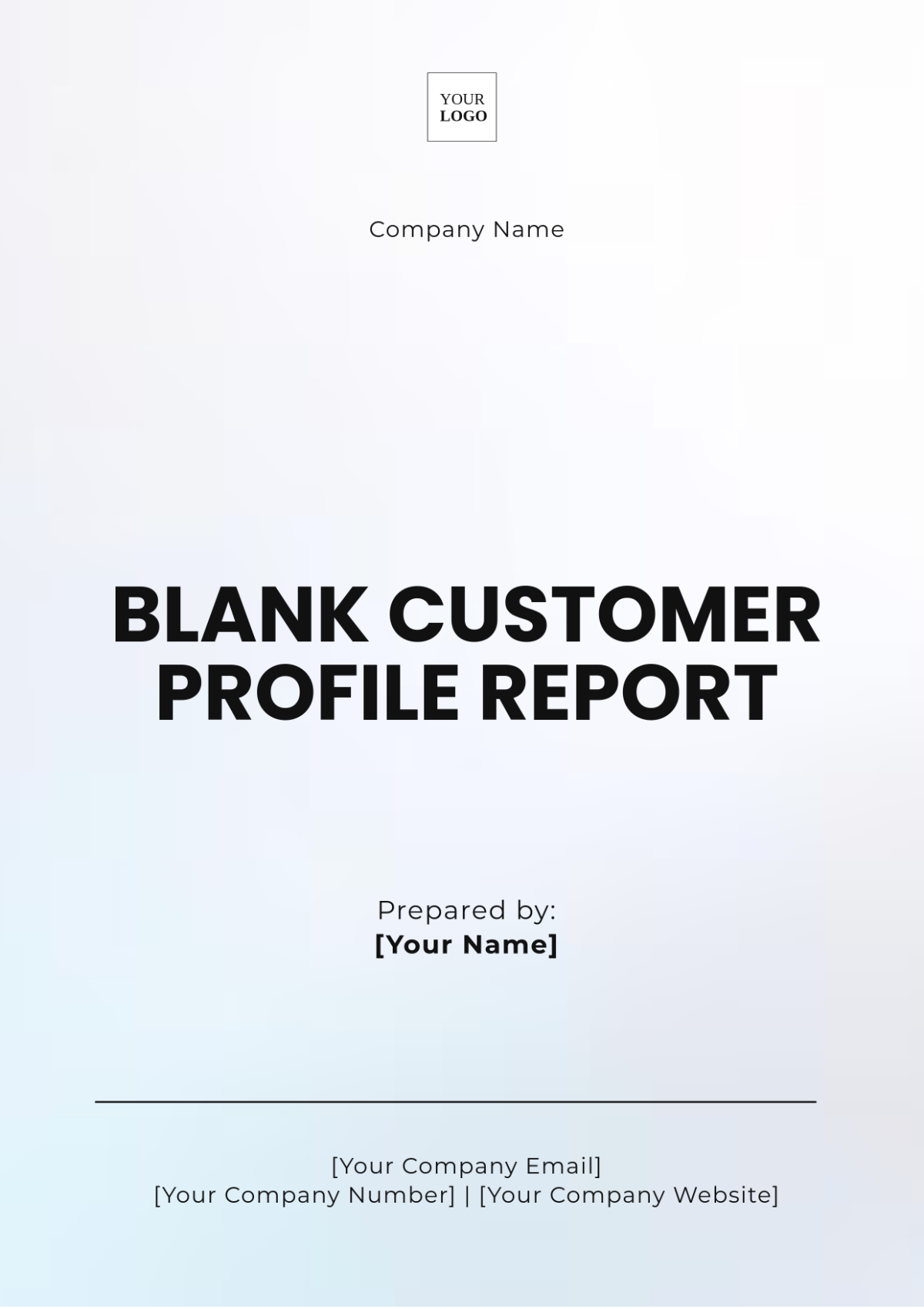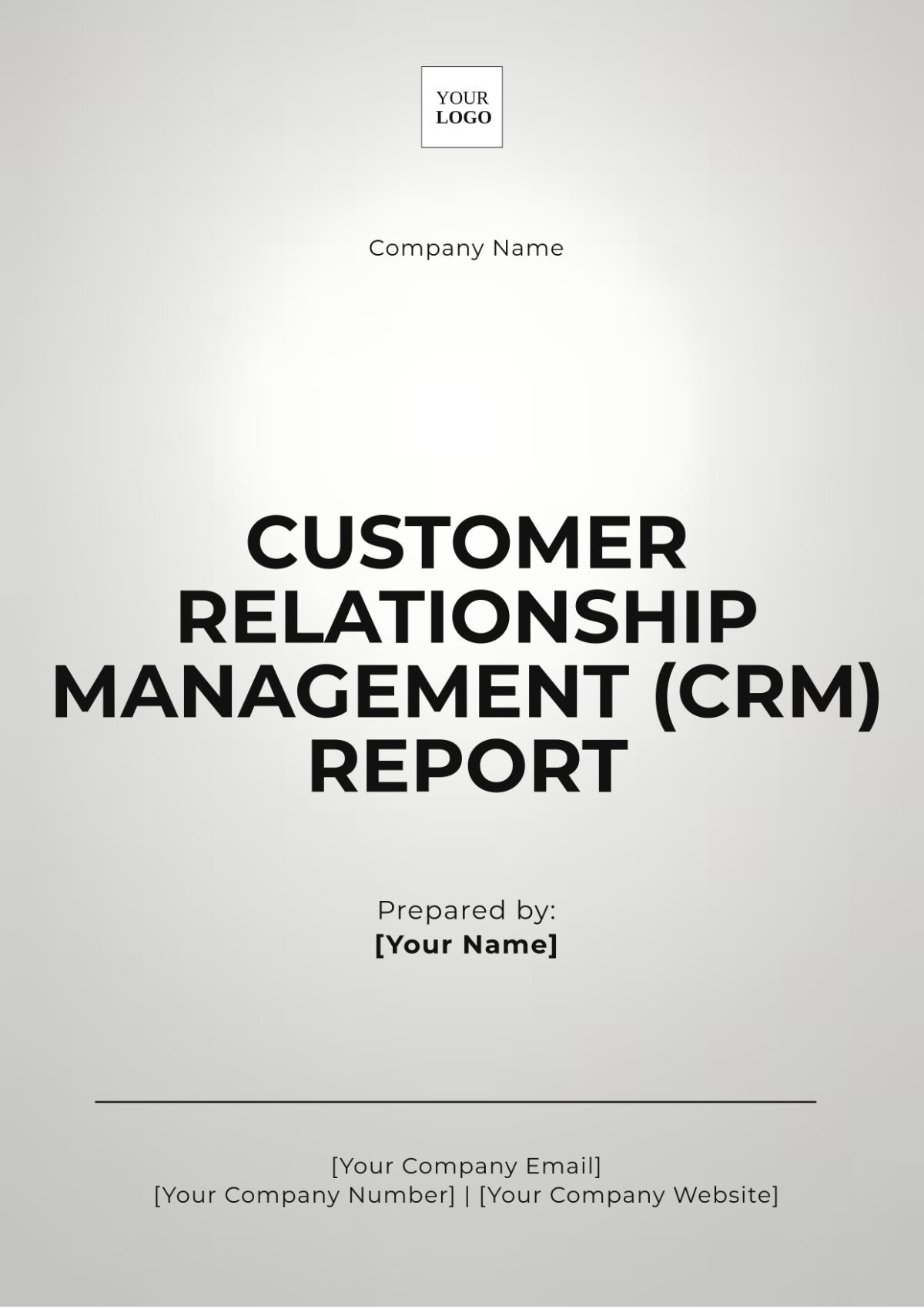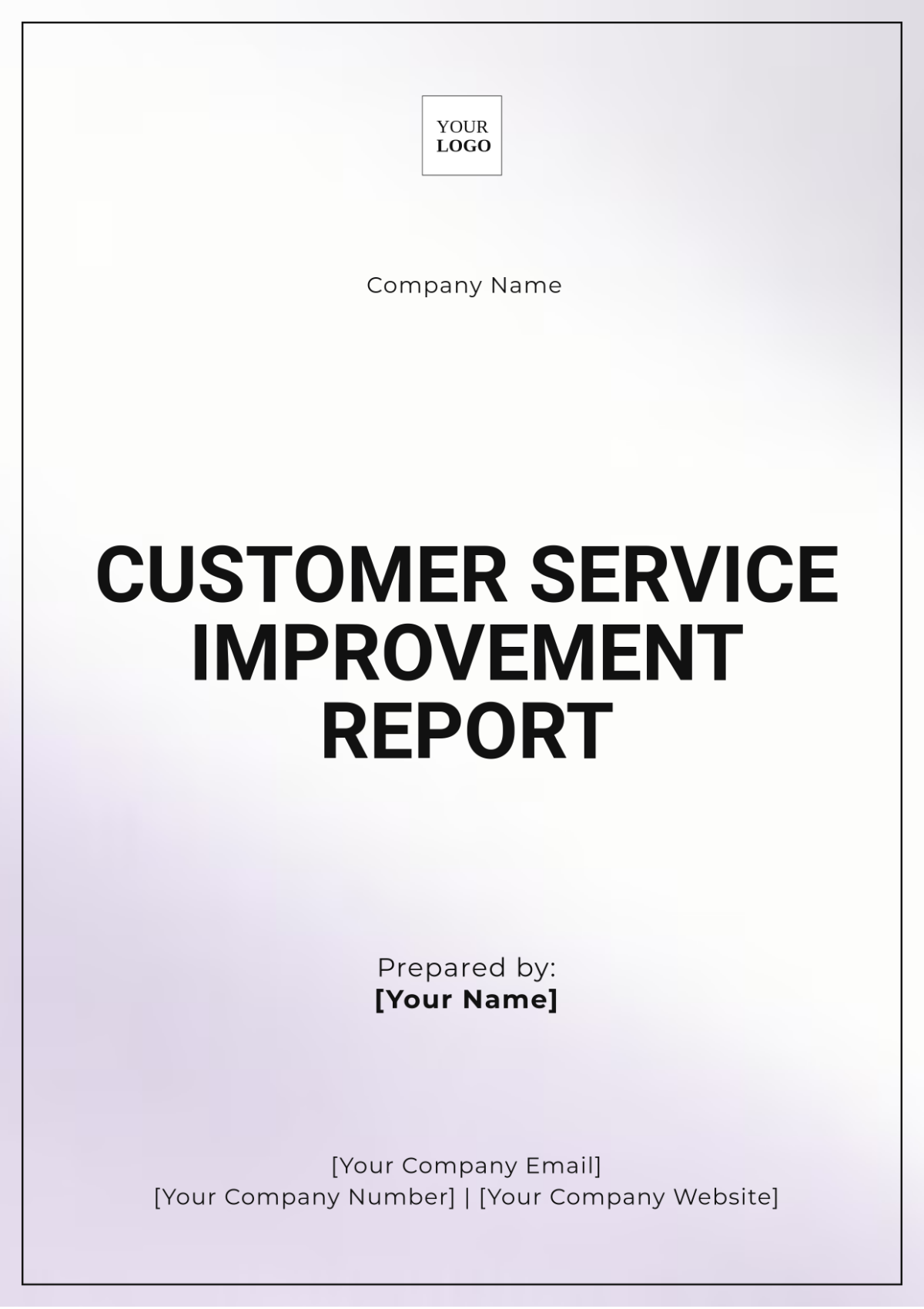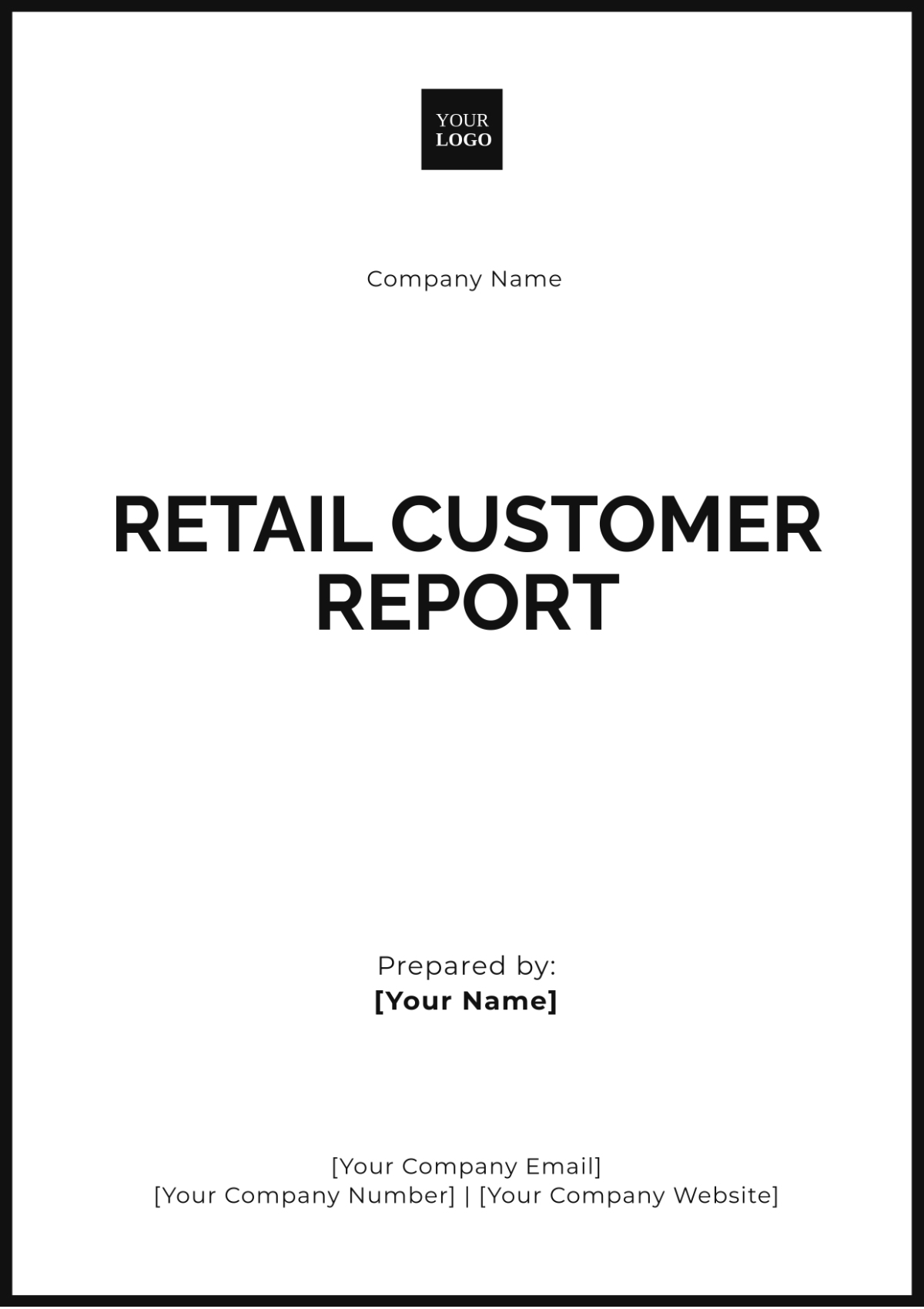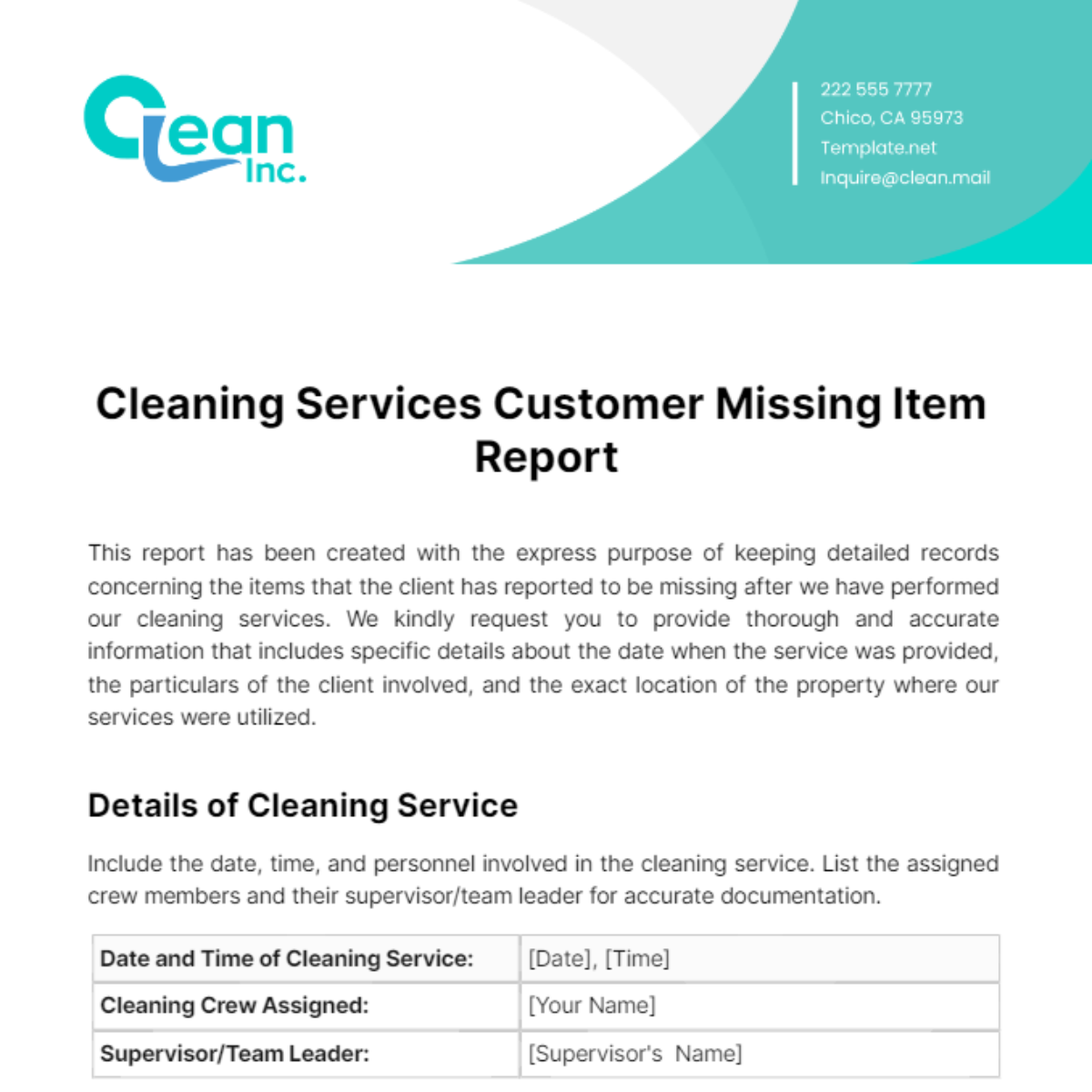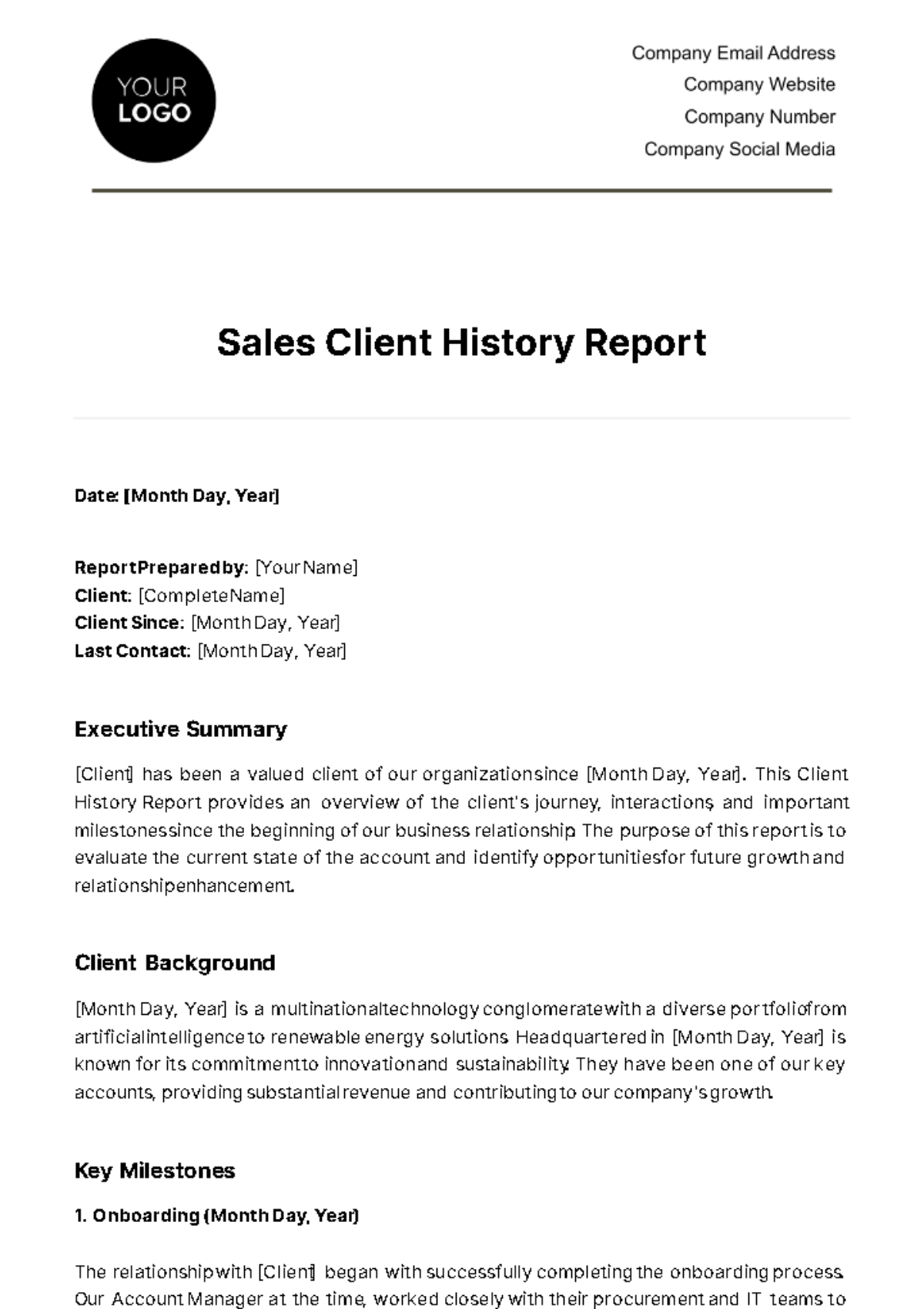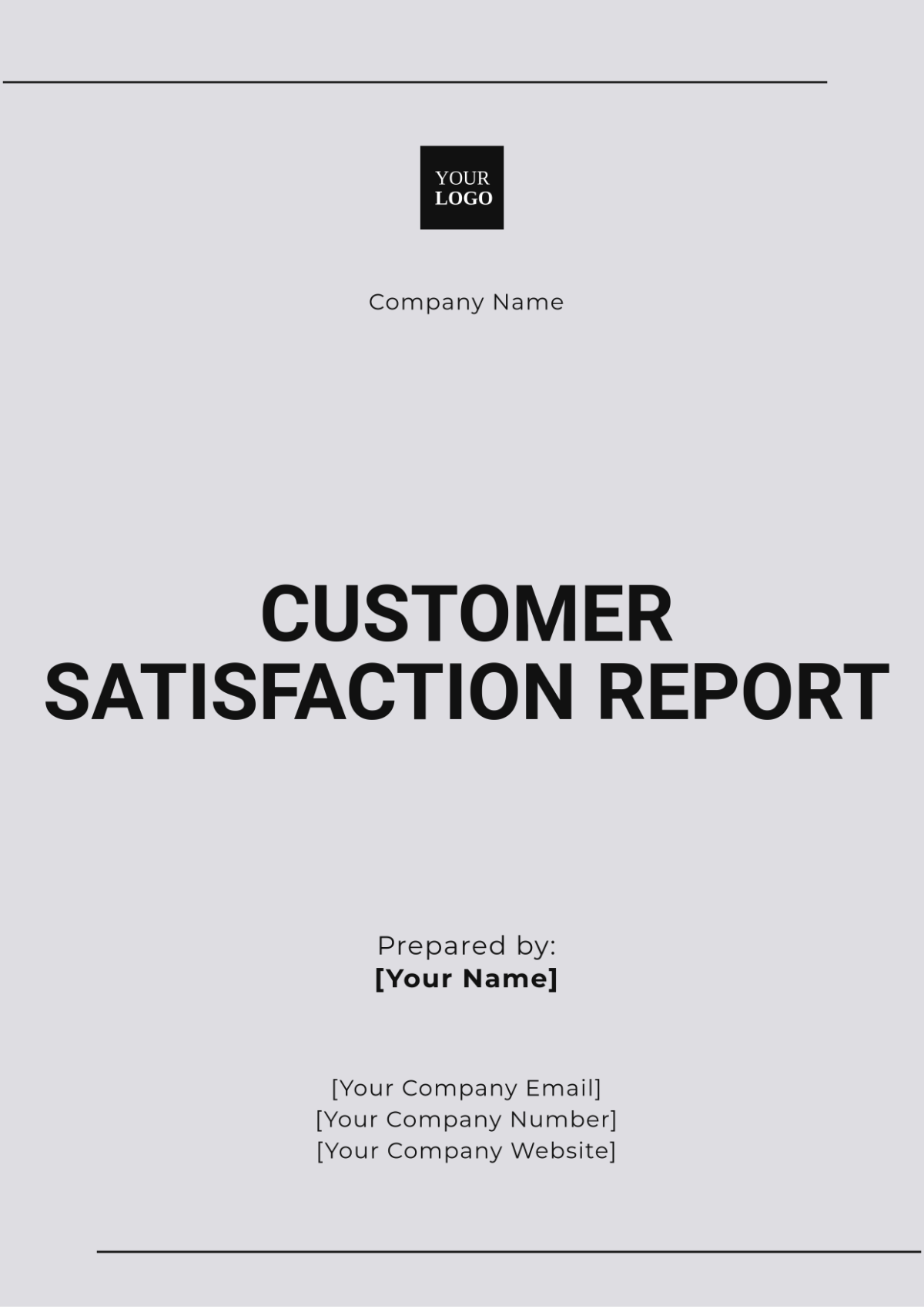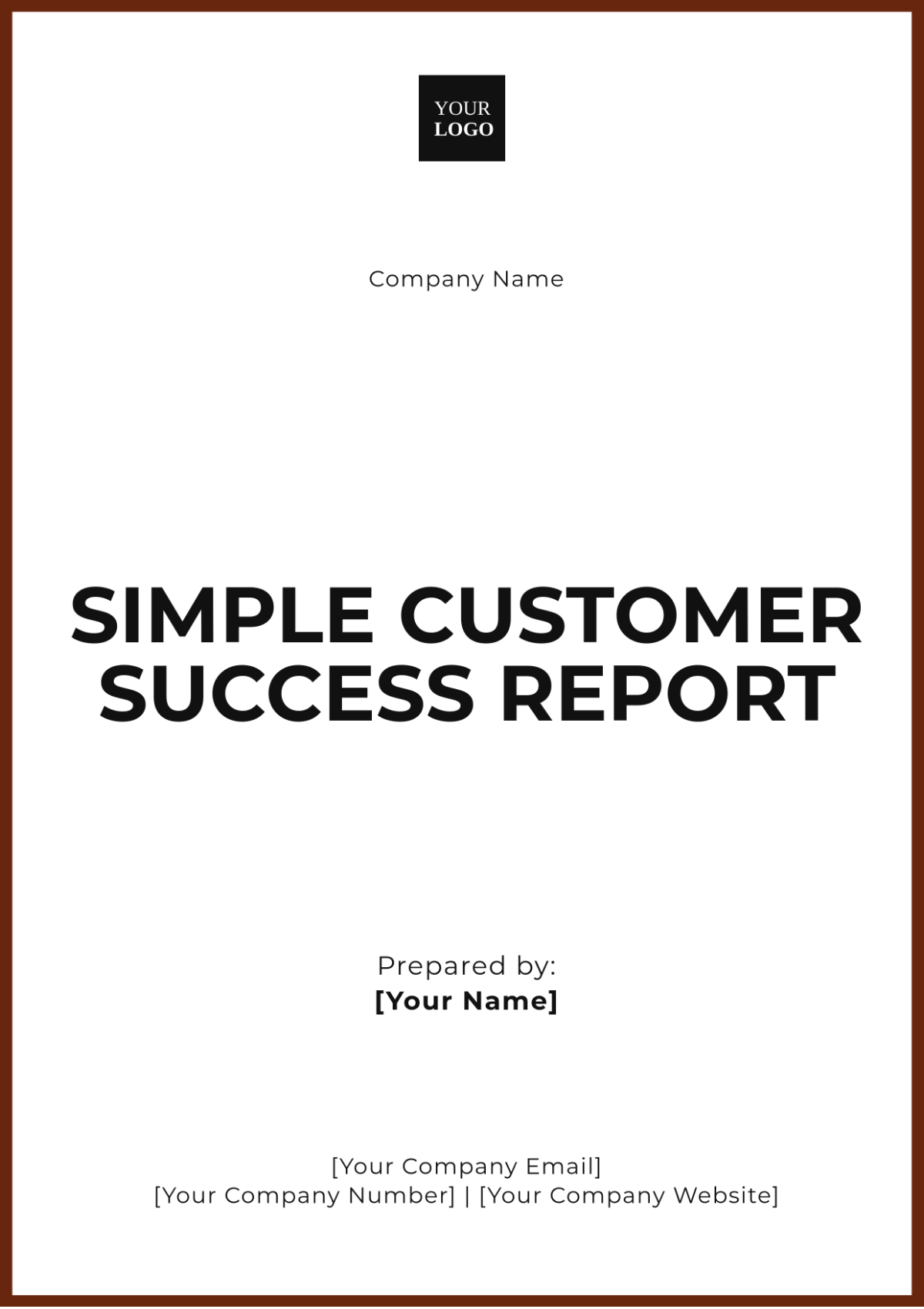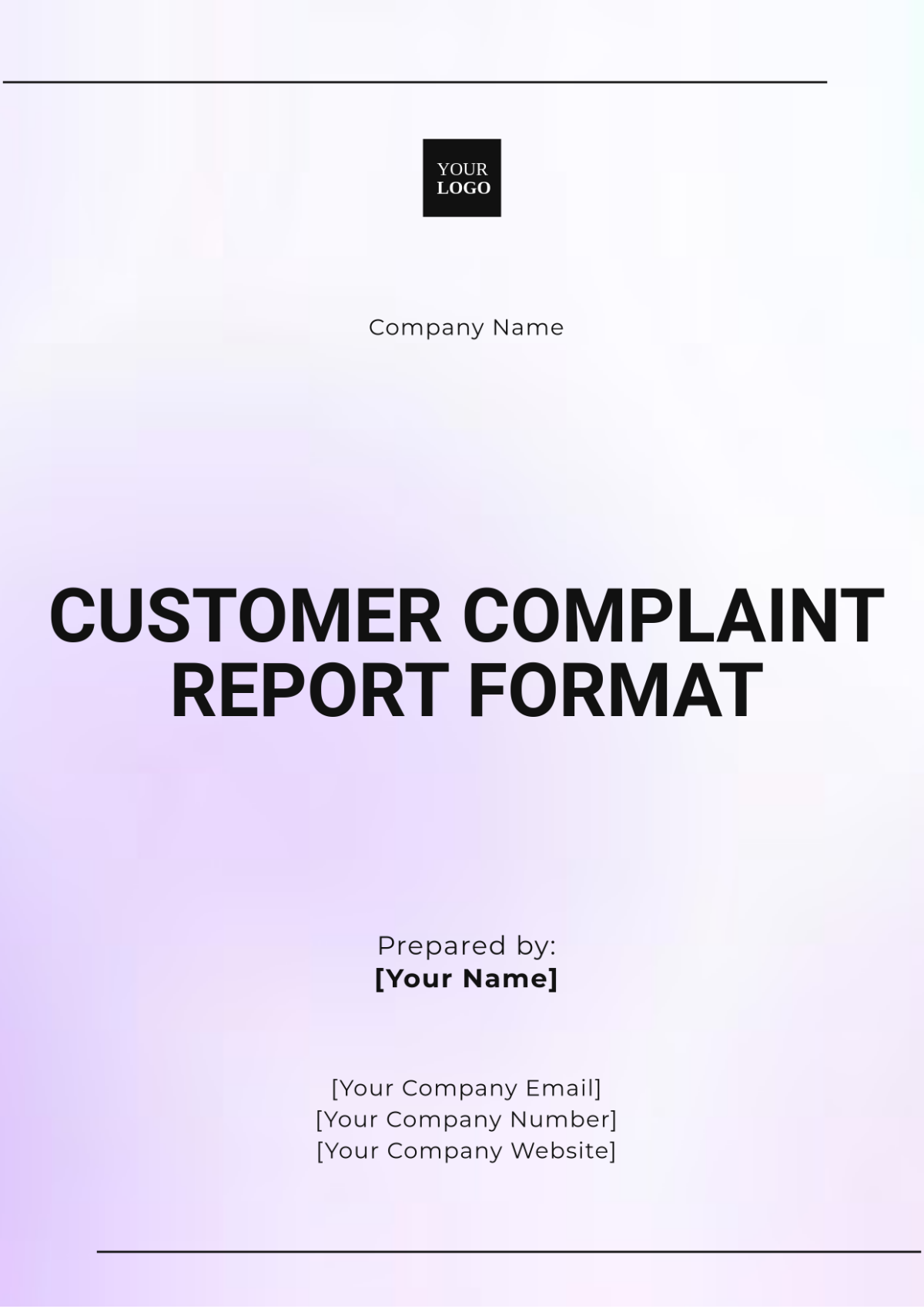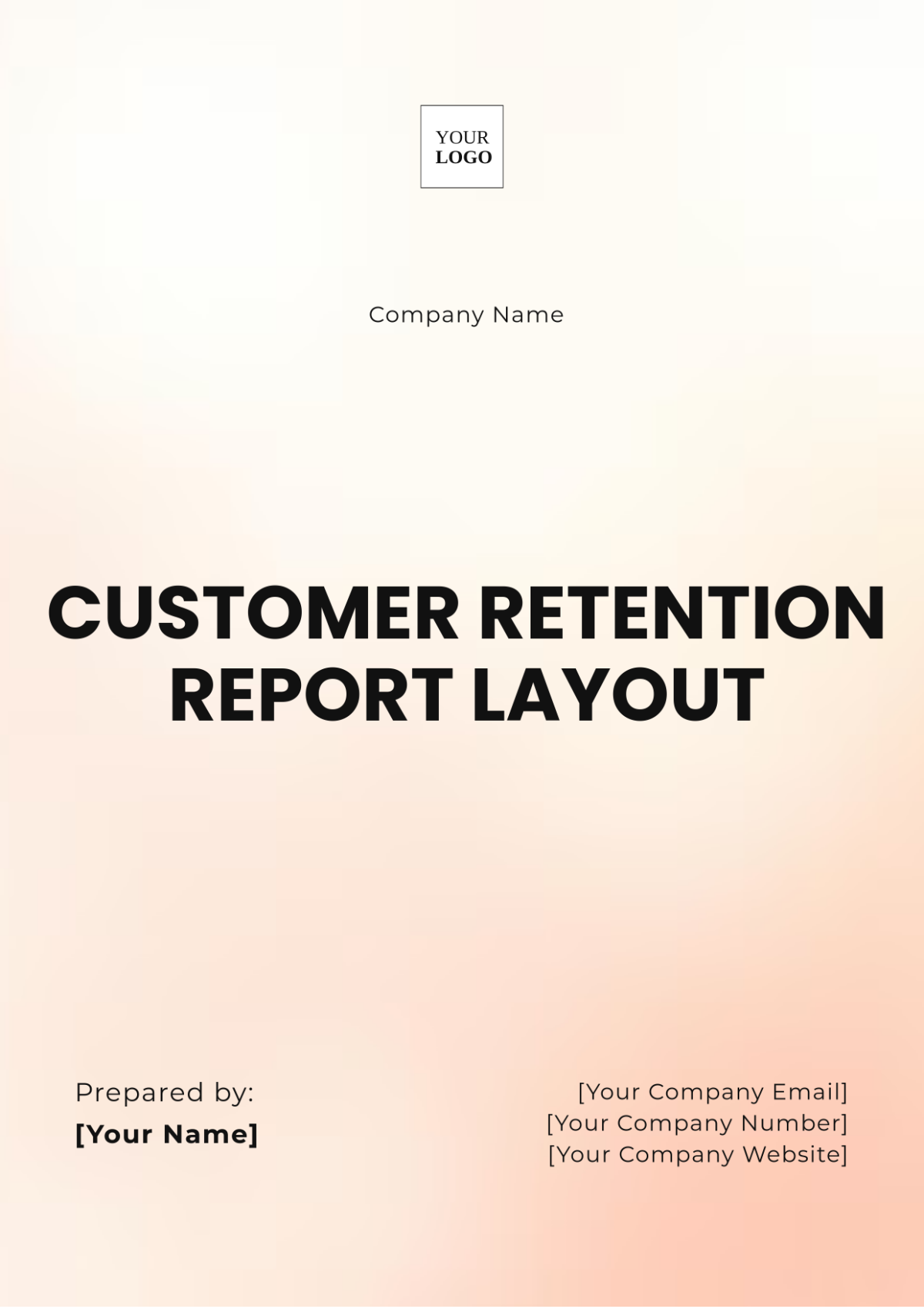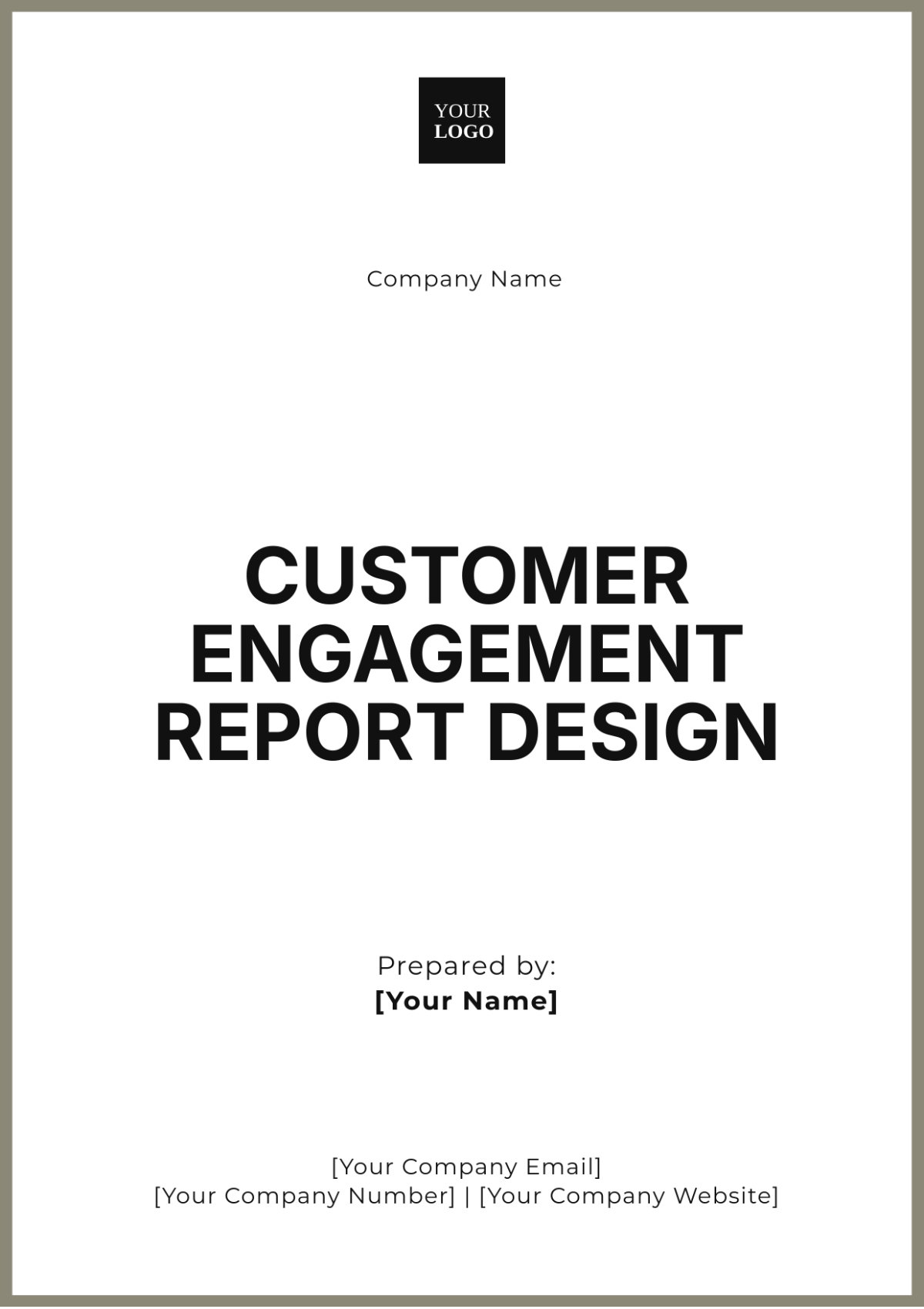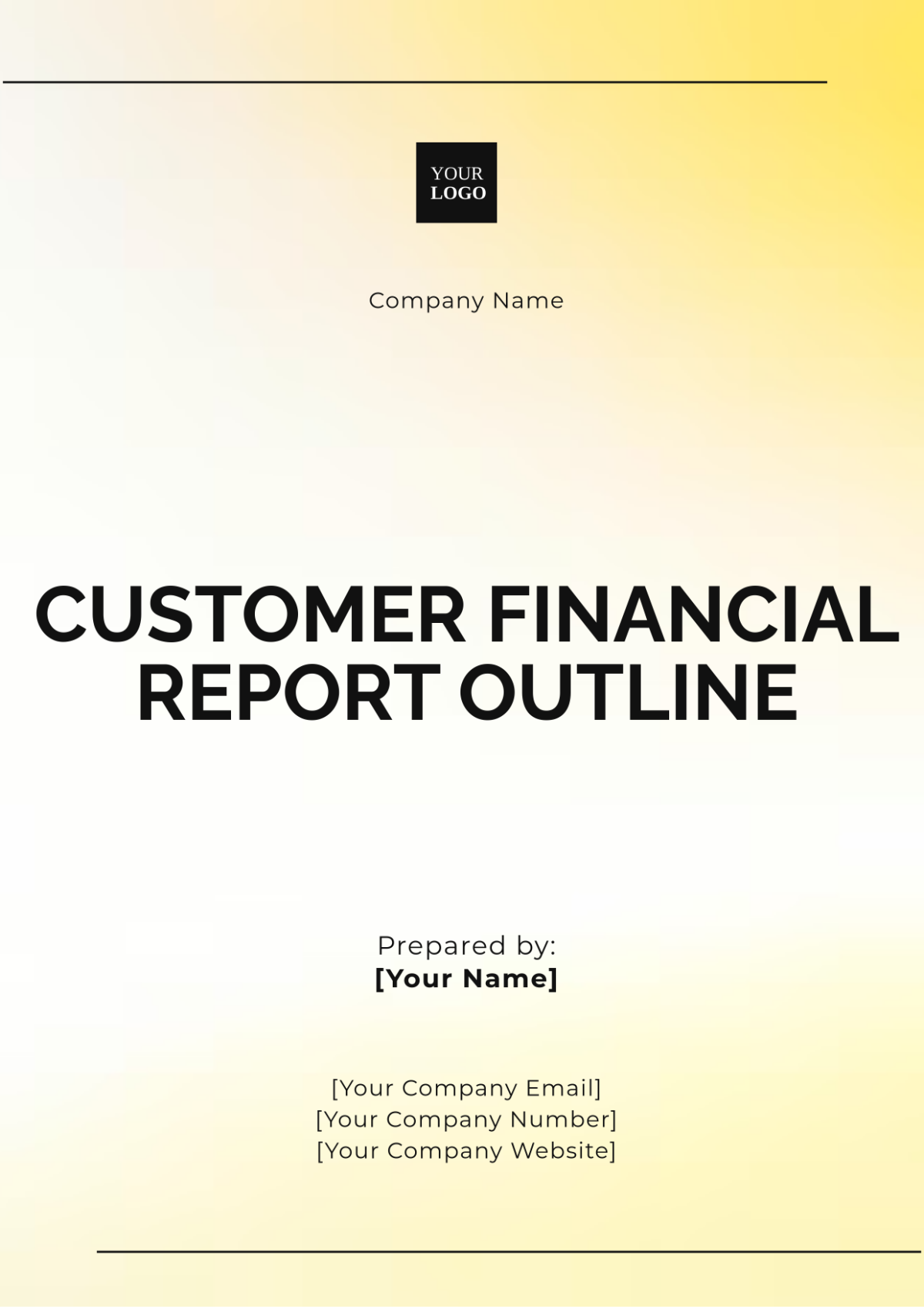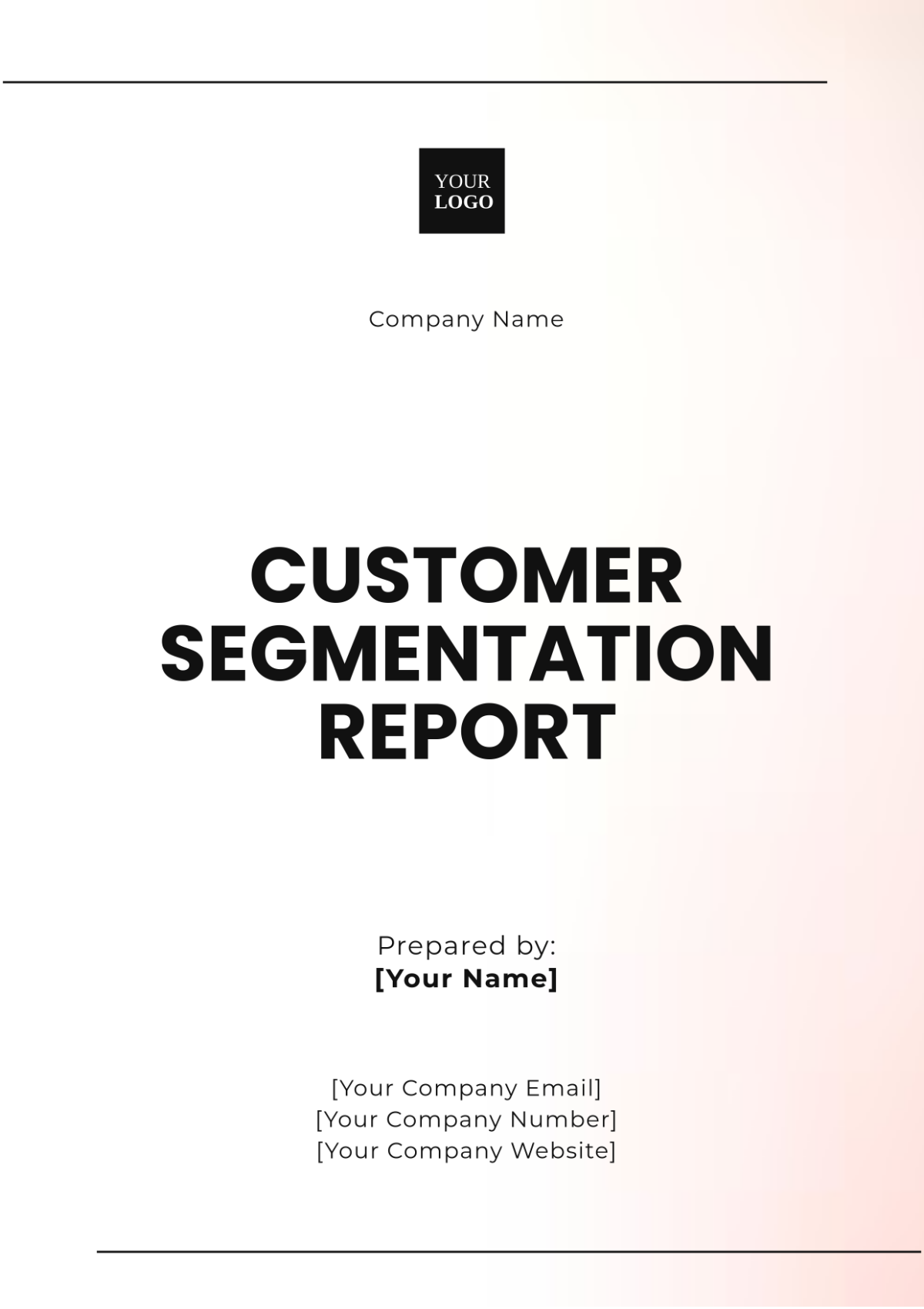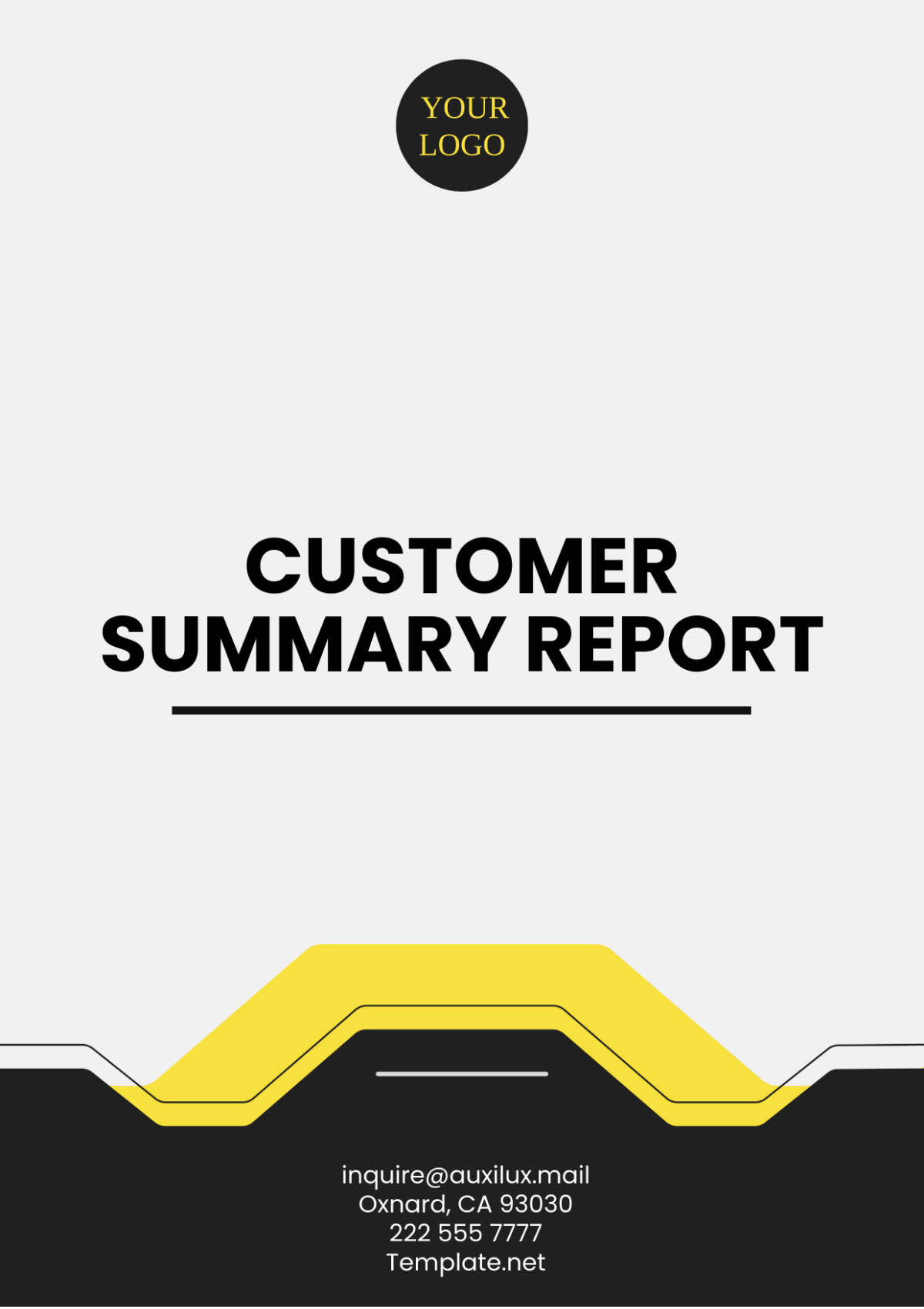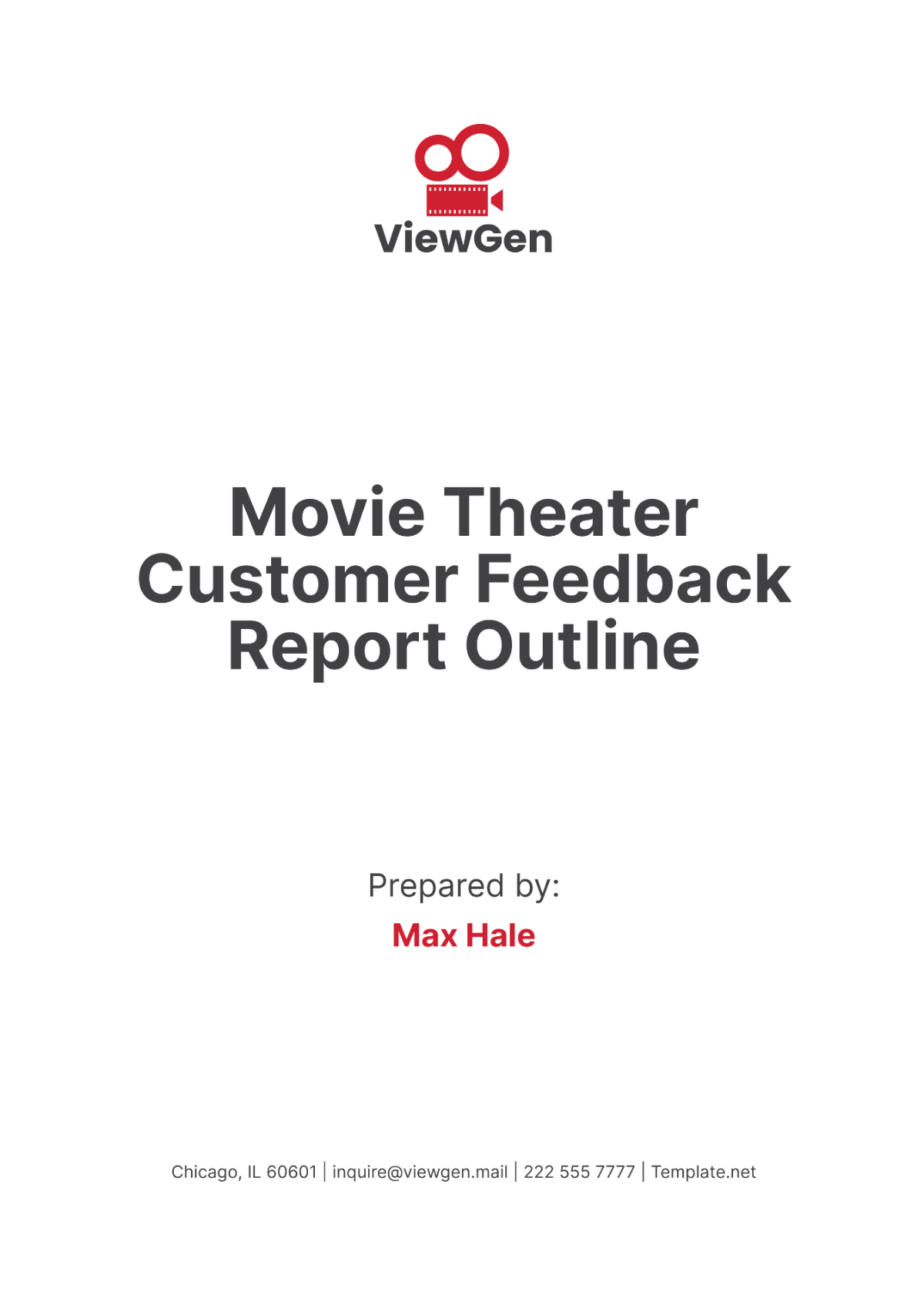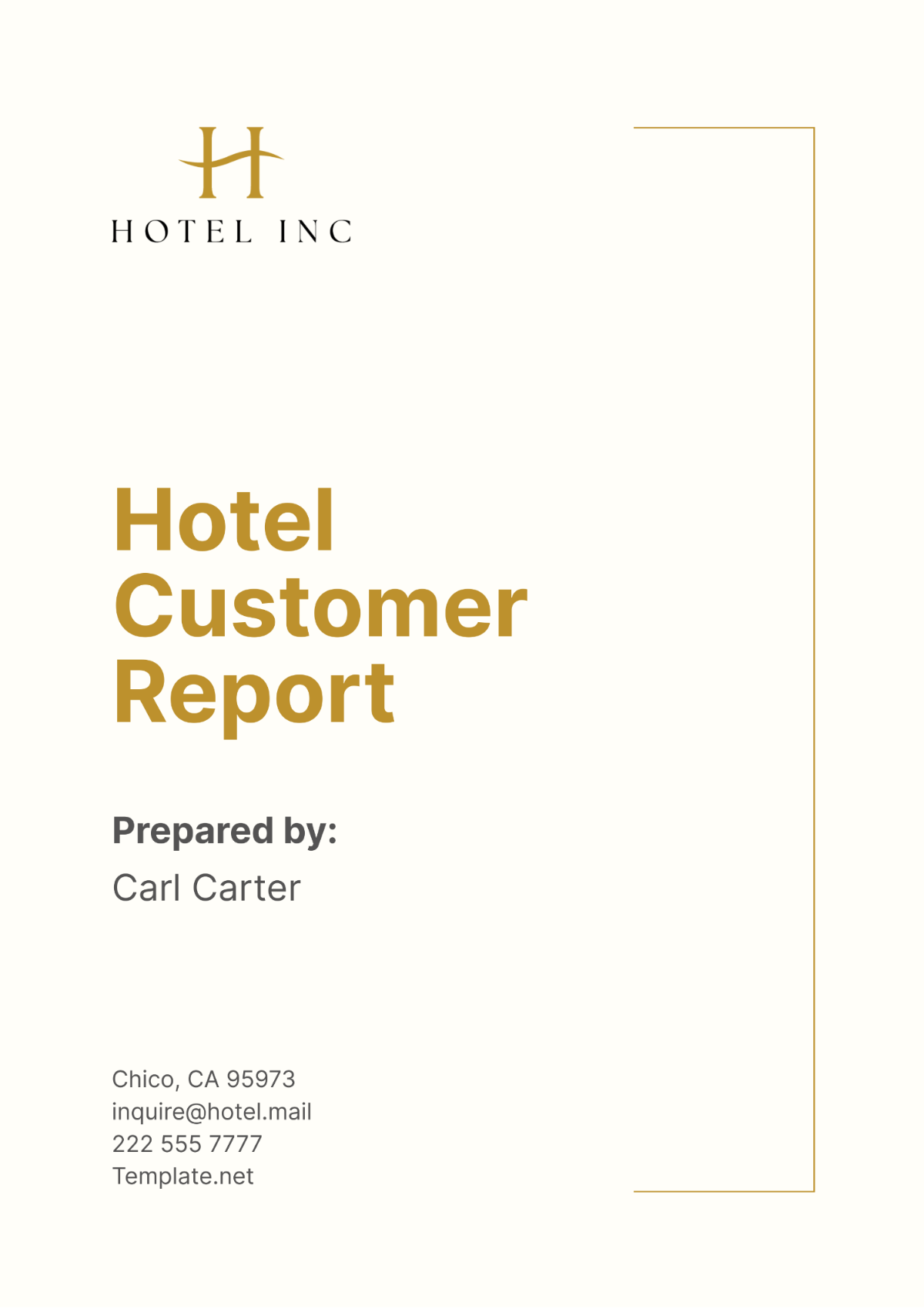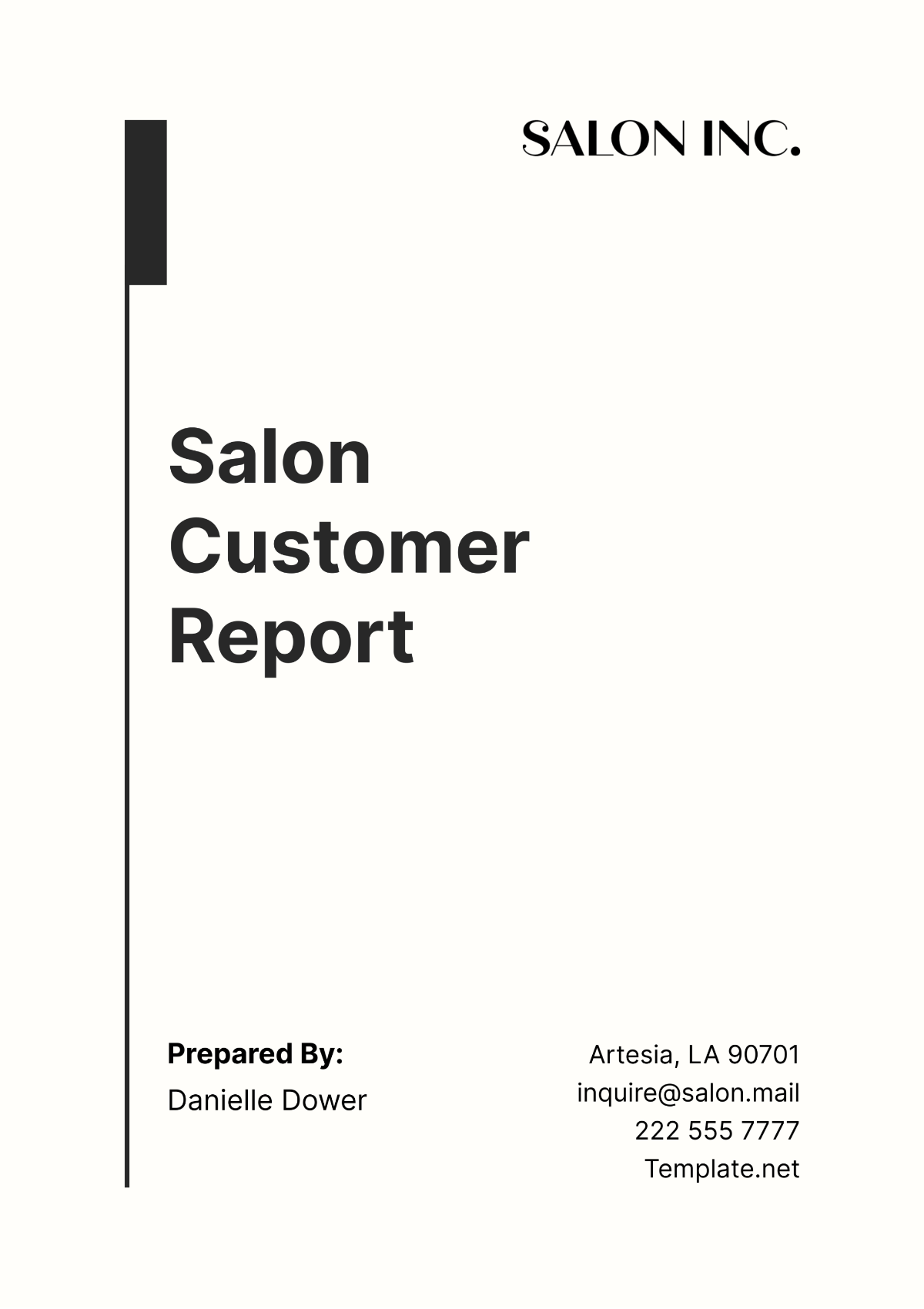Customer Onboarding Report
Prepared by: [Your Name]
Company: [Your Company Name]
Date: [Date]
I. Introduction/Overview
The Customer Onboarding Report provides a comprehensive analysis of the steps and strategies involved in integrating new customers into our company's ecosystem of products and services. By highlighting each phase of onboarding, this report evaluates the current progress, pinpoints challenges, and assesses the overall satisfaction and engagement of our customers during this critical stage. Our ultimate goal is to streamline the onboarding experience, ensuring customers transition smoothly, reducing churn, and fostering long-term loyalty and engagement. This report also focuses on providing actionable insights for improving future onboarding processes.
Key objectives of the report include:
Tracking onboarding completion rates and progress
Identifying key performance indicators (KPIs) that measure customer satisfaction and engagement
Highlighting issues that have affected the process and recommending solutions
Offering strategies for continuous improvement to optimize customer experiences
II. Customer Information
A. Customer Demographics
This section outlines the demographics of new customers onboarded within the reporting period, helping us tailor our services to meet the specific needs of diverse customer groups. Understanding demographic trends allows for more targeted communication, training, and product customization.
Age Group | Percentage |
|---|---|
18-24 | 20% |
25-34 | 35% |
35-44 | 25% |
45-54 | 15% |
55+ | 5% |
Key Insights: The largest group of customers falls between 25-34 years, representing 35% of new clients. This age group is likely to be more tech-savvy, demanding efficient onboarding and self-help resources.
B. Geographic Distribution
The onboarding process has reached customers globally. Below is the geographic distribution of customers for this period:
North America: 40%
Europe: 30%
Asia: 20%
Other Regions: 10%
Key Insights: North America remains the largest market, but there is growing customer engagement from Europe and Asia, suggesting potential regional customization in future onboarding efforts.
III. Onboarding Progress
A. Stages of Onboarding
The onboarding journey is divided into five key stages, each designed to provide step-by-step guidance and support, ensuring customers receive the necessary tools and information to maximize their success with our products/services.
Initial Contact: Establishing the first point of communication with the customer.
Product/Service Introduction: Providing customers with a detailed overview of the product/service features and benefits.
Setup and Integration: Assisting customers in setting up the product or integrating it with their existing systems.
Training and Support: Offering tutorials, training sessions, and support materials to enhance product usage.
Feedback and Evaluation: Gathering customer feedback and addressing any issues or concerns to ensure a seamless onboarding experience.
B. Completion Rates
The following completion rates demonstrate customer progress through each onboarding stage during the reporting period:
Onboarding Stage | Completion Rate |
|---|---|
Initial Contact | 95% |
Product/Service Introduction | 90% |
Setup and Integration | 85% |
Training and Support | 80% |
Feedback and Evaluation | 75% |
Key Insights: While the completion rates are relatively high, the drop in completion at later stages, especially in "Feedback and Evaluation," suggests room for improvement in follow-up processes.
IV. Key Metrics
A. Time to Onboard
The average time to fully onboard customers is approximately 14 days, which reflects a 10% improvement from the previous period. Faster onboarding times translate to quicker value realization for customers, enhancing satisfaction and retention rates.
B. Customer Satisfaction Score
The overall customer satisfaction score for this period is 85%, up from 80% in the last report. Customers have provided positive feedback on the clarity and efficiency of the onboarding process, but some have mentioned a need for more personalized support during the integration phase.
C. Engagement Levels
Customer engagement, measured by interaction frequency and feature utilization, shows an average of 3 sessions per week per customer. This suggests a solid level of customer interaction, but more effort can be placed on driving feature exploration to increase product adoption.
V. Challenges/Issues
A. Technical Difficulties
Several customers reported technical difficulties during the setup phase, especially with system integration. Compatibility with third-party systems has been a common challenge, requiring more robust support and tailored solutions.
B. Delayed Responses
Delays in response times from our support team, particularly during peak hours, were highlighted by customers. This is likely a result of high demand during specific periods, emphasizing the need for improved communication systems and expanded support hours.
VI. Next Steps/Recommendations
A. Enhance Technical Support
To address technical difficulties, we recommend the implementation of a 24/7 technical support team that can provide real-time solutions. Additionally, creating a specialized team for complex integrations will help customers resolve issues faster and ensure smoother transitions.
B. Improve Training Resources
Developing more comprehensive and interactive training materials, such as video tutorials, user guides, and personalized webinars, will offer customers an improved learning experience. Enhanced training will also reduce the need for ongoing support as customers become more self-sufficient.
C. Monitor Feedback Channels
Establishing real-time feedback channels (e.g., in-app surveys, and live chat) will enable our team to gather insights quickly and respond to emerging issues. This will increase responsiveness and customer satisfaction, especially during the critical early stages of onboarding.
VII. Conclusion
This Customer Onboarding Report shows significant progress, with increased satisfaction and completion rates. While the majority of customers are successfully moving through the onboarding process, challenges related to technical difficulties and support delays must be addressed to further optimize the experience. By enhancing technical support, improving training resources, and monitoring feedback in real-time, we are poised to improve onboarding efficiency and continue building strong, long-lasting relationships with our customers.
